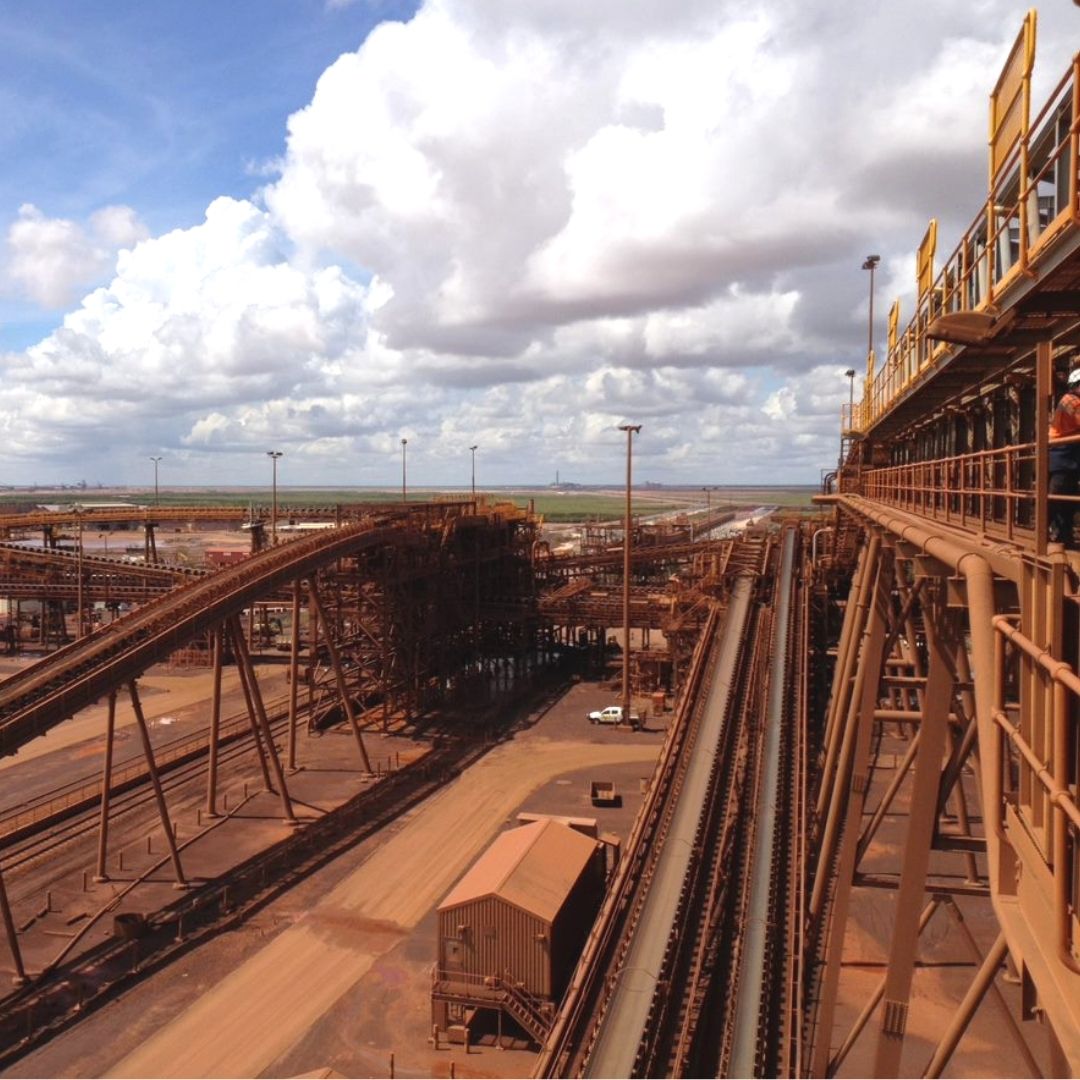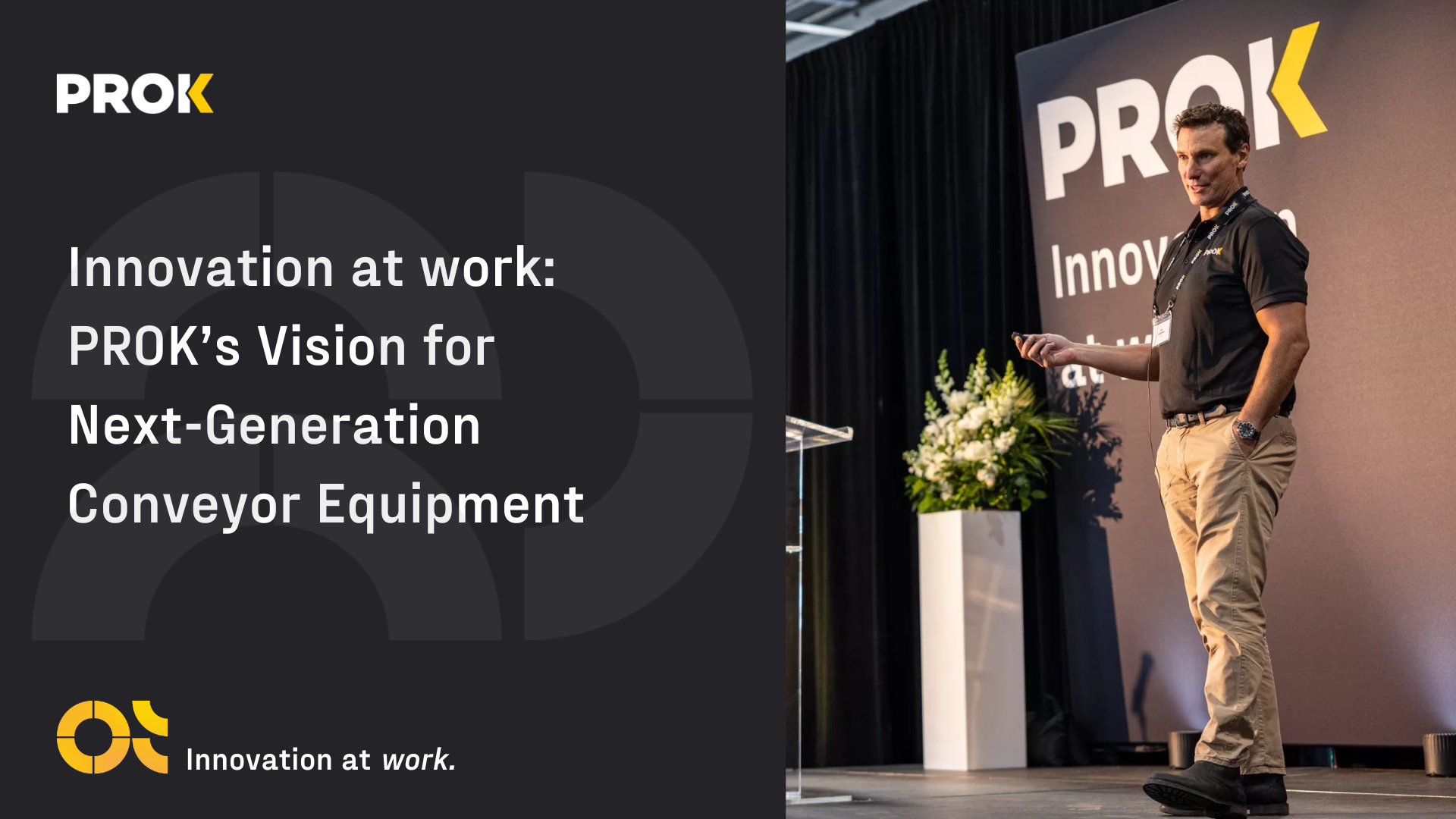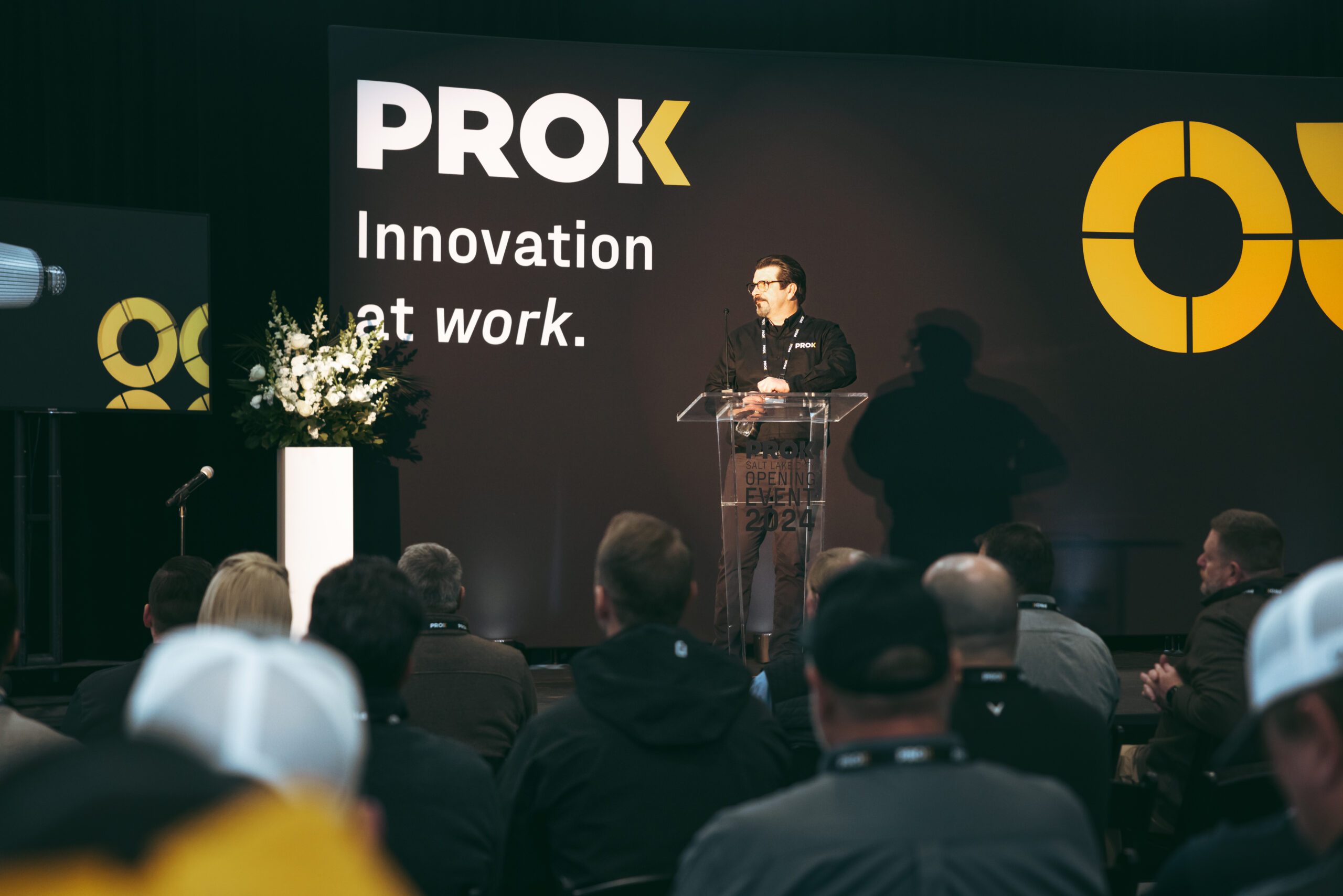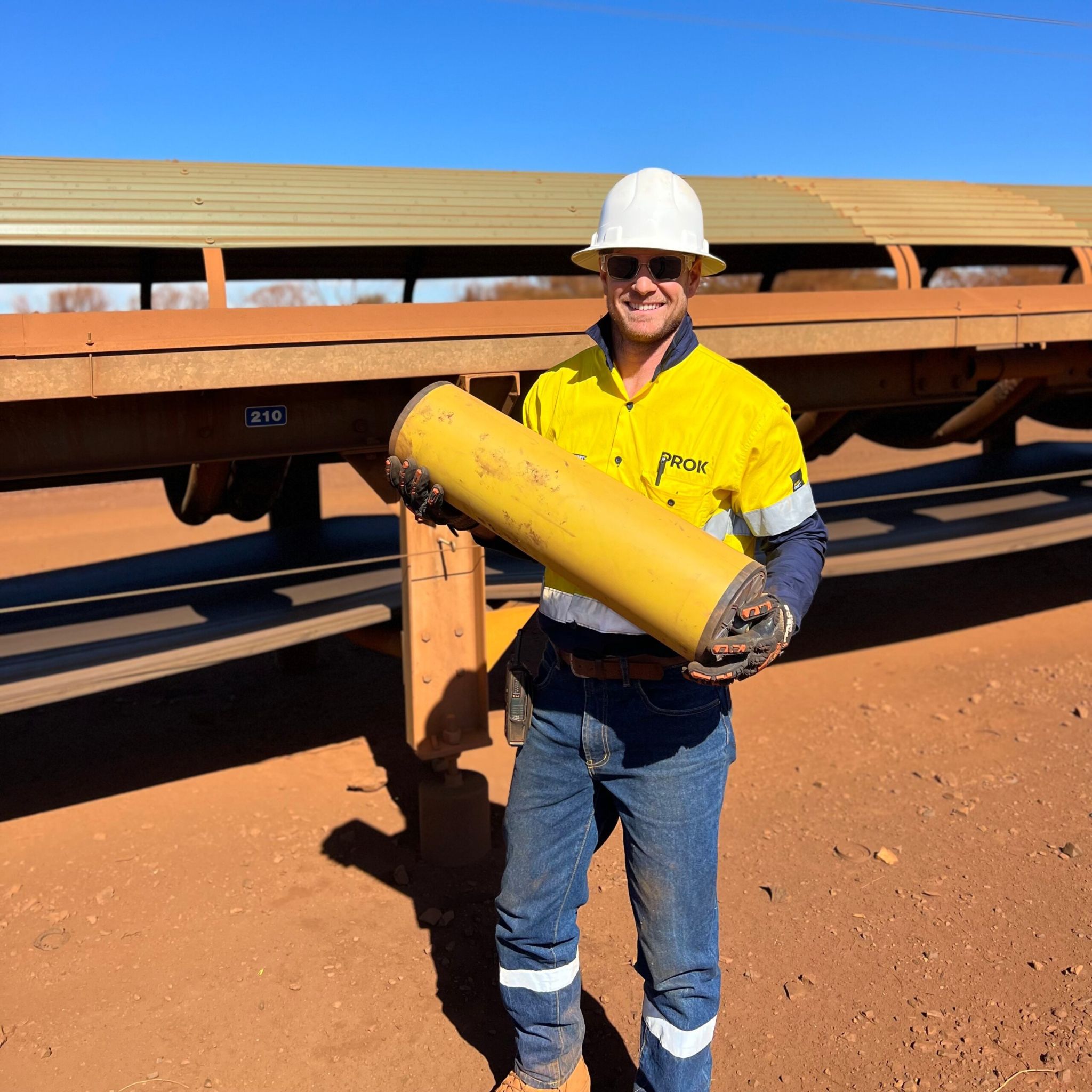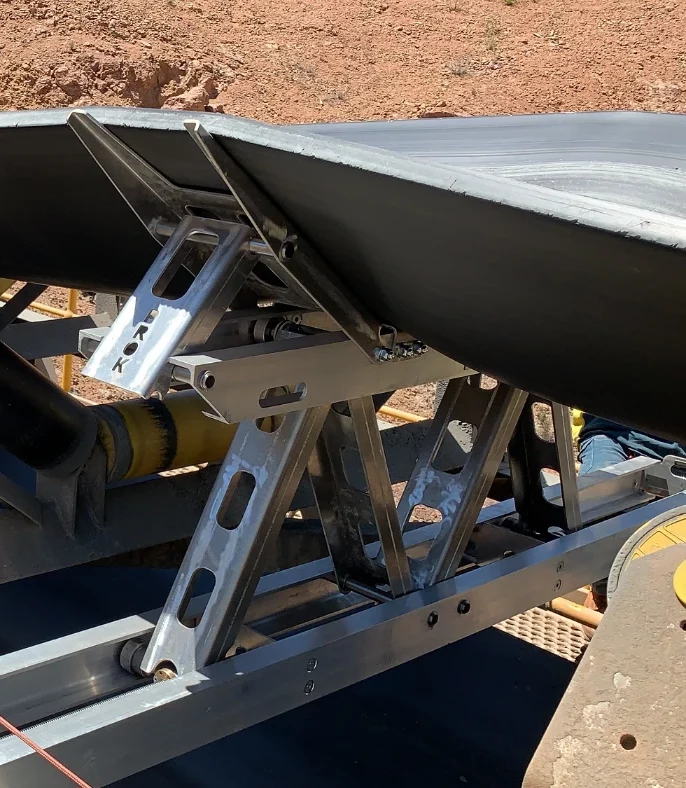Conveyor belt tracking is the ability to control and maintain the desired path of a belt and is often an indicator of the system’s health. Each new belt moves in its own path to its predecessor; however, belt tracking alignment issues can become present during any stage of the belt’s life. So how do you analyse your conveyor system and how can you set the belt on its optimum path for easy flow of production?
Tracking Principles
Understanding belt tracking is important to site maintenance and maintenance of mining equipment, PROK works with maintenance teams to better understand the basic principles of conveyor belt tracking.
The belt will always search for a position where all forces are balanced and rotate its direction to follow. Therefore, it is critical that frames and pulleys are aligned evenly to provide a strong structure for the belt to pass across, even from installation. From the moment a belt is placed, its fluidity of movement is conditional to its first contact on an idler and it will continue to move and track from that point forward.
There is an allowable tracking tolerance of ± 25 mm that can occur without posing serious risks to site operations.
Eliminate Problems Methodically to identify the root cause.
The first step is to eliminate the immediate problem to return the conveyor to its prime operational condition, PROK suggests systematically eliminating one common cause out at a time to help identify the root cause. It should be noted that often tracking problems are multifaceted with more than one cause, poor correction of tracking will also compound problems leading to high belt wear.
Common root causes can be categorised into three areas.
1. Belt
The health of the belt is subject to time, which is why commonly older belts see larger tracking issues. Carcass damage, uneven wear and bowed or spliced areas cause misalignment.
2. Structure
The structures supporting the belt are also critical in achieving correct alignment, idler and pulley alignment, material build-up and seized rollers are common contributors.
3. Material Loading
The distribution of the material load can also misalign the belt, materials are loaded off-centre or in large lumps to one side can cause this, as well as varying wet/dry conditions.
Common issues of conveyor belt tracking and causes
Problem: Conveyor runs to one side at a particular point
Causes: Material build-up, seized rollers, uncentred idler stands and unlevel structures
Problem: Belt runs to one side for long distances
Causes: Off-centre loading, material build-up, crooked conveyor structure, uncentred idlers/pulleys, or off-centre belt runner around the tail pulley
Problem: Belt runs to one side at a particular point
Causes: Bowed belt, spliced belt, damaged cords or the belt isn’t joined squarely
Problem: Belt runs off at tail pulley
Causes: material build-up or spillage, worn pulley lagging, structural misalignment pulley not square to the centre line of belt
Problem: Belt runs off at head pulley
Causes: worn pulley lagging, material spillage, structural misalignment, pulley not square or belt is unevenly stretched.
Eliminate Problems Methodically to identify the root cause.
The first step is to eliminate the immediate problem to return the conveyor to its prime operational condition, PROK suggests systematically eliminating one common cause out at a time to help identify the root cause. It should be noted that often tracking problems are multifaceted with more than one cause, poor correction of tracking will also compound problems leading to high belt wear.
Retain Records and learn from the process.
During the entire process, it is crucial to keep records. Records assist in understanding your conveyor and making daily efforts to meet best practices. PROK also keeps an in-depth record of the operations and subsequent maintenance changes, an on-site technician can evaluate these details and provide suggested maintenance plans whilst ensuring components are stocked and available to the customer.
PROK accessories and frames for guiding and tracking
PROK offer a range of customised belt guiding products such as training frames and persuaders to help keep the belt correctly aligned during operation and are designed for the safety of your belt and people with upgraded features to extend belt life.
Understanding belt tracking, being able to identify the root cause, along with common tracking issues and what causes them, can prevent long-term critical damage to your conveyor equipment.
Contact PROK to keep your conveyor and its components on track.


